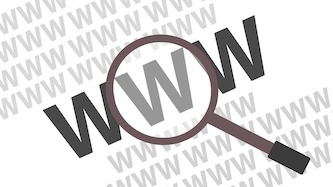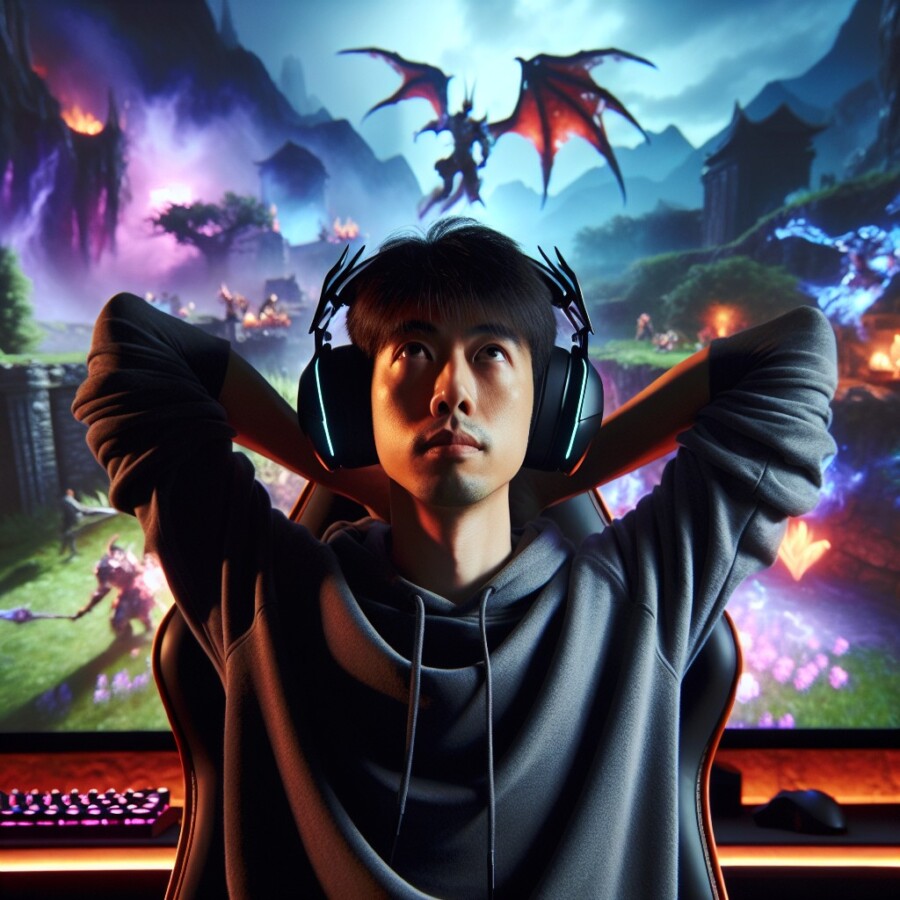A recent study found that one out of every three kids has trouble seeing things far away, a condition called short-sightedness or myopia. This problem is becoming more common among young people, possibly because they spend a lot of time looking at screens and less time outside, especially during the Covid lockdowns. Experts predict that by 2050, even more children could have this issue.
The study showed that places like Japan, South Korea, China, and Russia have the highest rates of myopia, while countries like Paraguay and Uganda have lower levels. Over five million kids and teens from 50 countries were part of the research, which revealed a big increase in short-sightedness, especially after the Covid pandemic.
Myopia usually starts in primary school and gets worse until around age 20 when the eye stops growing. Things like genetics and spending too much time on screens can make myopia worse. Girls tend to have more myopia than boys, possibly because they start puberty earlier.
To protect kids’ eyesight, experts suggest that children spend at least two hours outside every day, especially between ages seven and nine. It’s also important to get regular eye check-ups since myopia often runs in families. While myopia can’t be cured, it can be managed with glasses or contact lenses. Special lenses that help the eye grow differently might slow down myopia in young children, but they can be expensive.
It’s important to notice signs of myopia early, like having trouble seeing things far away, sitting close to screens, getting headaches, or rubbing the eyes a lot. By encouraging outdoor activities, regular eye check-ups, and knowing the risk factors for myopia, parents and caregivers can help protect children’s eye health and overall well-being.
Original news source: One in three children short-sighted, study suggests (BBC)
🎧 Listen:
Slow
Normal
Fast
📖 Vocabulary:
| 1 | myopia | A vision problem where distant objects appear blurry |
| 2 | condition | A state of health or a medical issue |
| 3 | lockdowns | Periods when people are required to stay at home to prevent disease spread |
| 4 | predict | To say what you think will happen in the future |
| 5 | genetics | The study of heredity and how traits are passed down |
| 6 | puberty | The time when a child’s body develops into an adult body |
| 7 | eyesight | The ability to see |
| 8 | check-ups | Medical appointments to monitor health |
| 9 | managed | Controlled or dealt with |
| 10 | lenses | Pieces of glass or plastic in glasses or contacts that help you see better |
| 11 | expensive | Costing a lot of money |
| 12 | signs | Indications or clues that something is happening |
| 13 | encourage | To support or motivate someone to do something |
| 14 | caregivers | People who take care of others, especially children |
| 15 | well-being | The state of being comfortable, healthy, or happy |
Group or Classroom Activities
Warm-up Activities:
– News Summary
Instructions: Divide students into pairs. Each pair will read the article and then summarize the main points in their own words. After a few minutes, have pairs share their summaries with the class.
– Opinion Poll
Instructions: Create a list of questions related to the article, such as “Do you think spending too much time on screens is the main cause of myopia in children?” or “Should schools include more outdoor activities to prevent myopia?” Have students move around the class, asking their classmates the questions and recording their answers. Afterward, discuss the results as a class.
– Vocabulary Pictionary
Instructions: Write down key vocabulary words from the article on separate pieces of paper. Have students pick a word and draw it on the board without using any letters or numbers. Their classmates must guess the word based on the drawing. This activity helps reinforce vocabulary retention.
– Think-Pair-Share
Instructions: Ask students to think about a time when they or someone they know experienced myopia or any other eye condition. Then, pair them up to discuss their thoughts and experiences. Finally, have a few pairs share their discussions with the whole class.
– Sketch It
Instructions: Divide the students into small groups. Assign each group a key point from the article (e.g., the causes of myopia, ways to prevent myopia, signs of myopia). Ask them to create a visual representation of their assigned point on a piece of paper. After a few minutes, have each group present their sketch to the class and explain their thinking behind it.
🤔 Comprehension Questions:
1. What is another name for the condition of having trouble seeing things far away?
2. Why do experts think myopia is becoming more common among young people?
3. Which countries have the highest rates of myopia according to the study?
4. At what age does myopia usually start getting worse until?
5. Why do girls tend to have more myopia than boys?
6. How much time outside per day do experts suggest children spend to protect their eyesight?
7. Can myopia be cured? How can it be managed?
8. What are some signs that someone might have myopia according to the article?
Go to answers ⇩
🎧✍️ Listen and Fill in the Gaps:
A recent (1)______ found that one out of every three kids has (2)______ seeing things far away, a condition called short-sightedness or myopia. This problem is becoming more common among young people, possibly because they spend a lot of time looking at screens and less time outside, especially during the (3)______ lockdowns. Experts predict that by 2050, even more children could have this issue.
The study (4)______ that places like Japan, South Korea, China, and Russia have the highest rates of (5)______, while (6)______ like Paraguay and Uganda have lower (7)______. Over five million kids and teens from 50 countries were part of the research, which revealed a big increase in short-sightedness, especially after the Covid pandemic.
(8)______ usually starts in primary school and gets worse until around age 20 when the eye stops growing. Things like genetics and spending too much time on screens can make myopia (9)______. Girls tend to have more myopia than boys, possibly because they (10)______ puberty earlier.
To (11)______ kids’ eyesight, experts suggest that children spend at least two hours outside every day, especially between ages seven and nine. It’s also important to get regular eye check-ups since myopia often runs in families. While myopia can’t be (12)______, it can be managed with glasses or contact lenses. Special lenses that help the eye grow differently might slow down myopia in young (13)______, but they can be expensive.
It’s important to notice signs of myopia early, like having trouble seeing things far away, sitting close to screens, getting headaches, or (14)______ the eyes a lot. By encouraging (15)______ activities, regular eye check-ups, and knowing the risk factors for myopia, parents and caregivers can help protect children’s eye health and (16)______ well-being.
Go to answers ⇩
💬 Discussion Questions:
Students can ask a partner these questions, or discuss them as a group.
1. What is myopia and why do you think it’s becoming more common among kids?
2. How would you feel if you had trouble seeing things far away like some kids do?
3. Do you like spending time outside? Why or why not?
4. Do you think it’s important for kids to have regular eye check-ups? Why?
5. What are some ways parents and caregivers can help protect children’s eye health according to the article?
6. How do you think spending too much time on screens can affect your eyesight?
7. Why do you think girls tend to have more myopia than boys?
8. What are some signs of myopia that the article mentions?
9. How do you think myopia can affect a child’s overall well-being?
10. Why is it suggested that children spend at least two hours outside every day?
11. Do you think it’s easy to manage myopia with glasses or contact lenses? Why or why not?
12. What do you think could be done to raise awareness about the importance of eye health among kids?
13. How do you think genetics play a role in the development of myopia?
14. Why do you think the study found higher rates of myopia in certain countries compared to others?
15. What outdoor activities do you enjoy that could help protect your eyesight, according to the experts in the article?
Individual Activities
📖💭 Vocabulary Meanings:
Match each word to its meaning.
Words:
1. myopia
2. condition
3. lockdowns
4. predict
5. genetics
6. puberty
7. eyesight
8. check-ups
9. managed
10. lenses
11. expensive
12. signs
13. encourage
14. caregivers
15. well-being
Meanings:
(A) People who take care of others, especially children
(B) The ability to see
(C) Medical appointments to monitor health
(D) Indications or clues that something is happening
(E) To say what you think will happen in the future
(F) Periods when people are required to stay at home to prevent disease spread
(G) Pieces of glass or plastic in glasses or contacts that help you see better
(H) To support or motivate someone to do something
(I) A vision problem where distant objects appear blurry
(J) The time when a child’s body develops into an adult body
(K) Controlled or dealt with
(L) A state of health or a medical issue
(M) Costing a lot of money
(N) The study of heredity and how traits are passed down
(O) The state of being comfortable, healthy, or happy
Go to answers ⇩
🔡 Multiple Choice Questions:
1. What is another name for short-sightedness?
(a) Myopia
(b) Hyperopia
(c) Astigmatism
(d) Presbyopia
2. According to the study, which of the following countries has lower levels of myopia?
(a) Japan
(b) South Korea
(c) China
(d) Paraguay
3. At what age does myopia usually start getting worse?
(a) In primary school
(b) During puberty
(c) In preschool
(d) Around age 20
4. What can make myopia worse?
(a) Eating carrots
(b) Spending too much time on screens
(c) Playing outside
(d) Drinking milk
5. Who tends to have more myopia according to the study?
(a) Boys
(b) Adults
(c) Girls
(d) Elderly people
6. How can myopia be managed?
(a) With surgery
(b) With glasses or contact lenses
(c) With medication
(d) With exercise
7. What is one way to slow down myopia in young children?
(a) Eating more candy
(b) Watching TV for hours
(c) Special lenses that help the eye grow differently
(d) Avoiding outdoor activities
8. What are signs of myopia that parents should look out for?
(a) Having trouble seeing things far away
(b) Getting headaches
(c) Rubbing the eyes a lot
(d) All of the above
Go to answers ⇩
🕵️ True or False Questions:
1. One out of every two kids has trouble seeing things far away, which is known as myopia or short-sightedness.
2. Genetics and excessive screen time can worsen myopia.
3. Boys tend to have more myopia than girls, possibly due to starting puberty earlier.
4. Countries like Japan, South Korea, China, and Russia have lower rates of myopia compared to places like Paraguay and Uganda.
5. Spending at least two hours outside daily, regular eye check-ups, and recognizing early signs of myopia can help protect children’s eye health.
6. Myopia typically begins in secondary school and worsens until around age 30.
7. Spending a lot of time looking at screens and less time outside may contribute to the increase in myopia among young people.
8. By 2050, it is predicted that even more children could be affected by myopia.
Go to answers ⇩
📝 Write a Summary:
Write a summary of this news article in two sentences.
Check your writing now with the best free AI for English writing!
Writing Questions:
Answer the following questions. Write as much as you can for each answer.
Check your answers with our free English writing assistant!
1. Why is myopia becoming more common among young people according to the article?
2. Which countries have the highest rates of myopia, and which ones have lower levels, as mentioned in the study?
3. At what age does myopia usually start to get worse, and when does it typically stop getting worse?
4. What are some ways experts suggest to protect kids’ eyesight from myopia?
5. How can parents and caregivers help protect children’s eye health and overall well-being, according to the article?
✅ Answers
🤔✅ Comprehension Question Answers:
1. What is another name for the condition of having trouble seeing things far away?
Short-sightedness or myopia.
2. Why do experts think myopia is becoming more common among young people?
Experts think myopia is becoming more common among young people because they spend a lot of time looking at screens and less time outside, especially during the Covid lockdowns.
3. Which countries have the highest rates of myopia according to the study?
Countries like Japan, South Korea, China, and Russia have the highest rates of myopia according to the study.
4. At what age does myopia usually start getting worse until?
Myopia usually starts in primary school and gets worse until around age 20 when the eye stops growing.
5. Why do girls tend to have more myopia than boys?
Girls tend to have more myopia than boys, possibly because they start puberty earlier.
6. How much time outside per day do experts suggest children spend to protect their eyesight?
Experts suggest that children spend at least two hours outside every day, especially between ages seven and nine, to protect their eyesight.
7. Can myopia be cured? How can it be managed?
Myopia cannot be cured, but it can be managed with glasses or contact lenses. Special lenses that help the eye grow differently might slow down myopia in young children, but they can be expensive.
8. What are some signs that someone might have myopia according to the article?
Some signs that someone might have myopia include having trouble seeing things far away, sitting close to screens, getting headaches, or rubbing the eyes a lot.
Go back to questions ⇧
🎧✍️✅ Listen and Fill in the Gaps Answers:
(1) study
(2) trouble
(3) Covid
(4) showed
(5) myopia
(6) countries
(7) levels
(8) Myopia
(9) worse
(10) start
(11) protect
(12) cured
(13) children
(14) rubbing
(15) outdoor
(16) overall
Go back to questions ⇧
📖💭✅ Vocabulary Meanings Answers:
1. myopia
Answer: (I) A vision problem where distant objects appear blurry
2. condition
Answer: (L) A state of health or a medical issue
3. lockdowns
Answer: (F) Periods when people are required to stay at home to prevent disease spread
4. predict
Answer: (E) To say what you think will happen in the future
5. genetics
Answer: (N) The study of heredity and how traits are passed down
6. puberty
Answer: (J) The time when a child’s body develops into an adult body
7. eyesight
Answer: (B) The ability to see
8. check-ups
Answer: (C) Medical appointments to monitor health
9. managed
Answer: (K) Controlled or dealt with
10. lenses
Answer: (G) Pieces of glass or plastic in glasses or contacts that help you see better
11. expensive
Answer: (M) Costing a lot of money
12. signs
Answer: (D) Indications or clues that something is happening
13. encourage
Answer: (H) To support or motivate someone to do something
14. caregivers
Answer: (A) People who take care of others, especially children
15. well-being
Answer: (O) The state of being comfortable, healthy, or happy
Go back to questions ⇧
🔡✅ Multiple Choice Answers:
1. What is another name for short-sightedness?
Answer: (a) Myopia
2. According to the study, which of the following countries has lower levels of myopia?
Answer: (d) Paraguay
3. At what age does myopia usually start getting worse?
Answer: (d) Around age 20
4. What can make myopia worse?
Answer: (b) Spending too much time on screens
5. Who tends to have more myopia according to the study?
Answer: (c) Girls
6. How can myopia be managed?
Answer: (b) With glasses or contact lenses
7. What is one way to slow down myopia in young children?
Answer: (c) Special lenses that help the eye grow differently
8. What are signs of myopia that parents should look out for?
Answer: (a) Having trouble seeing things far away
Go back to questions ⇧
🕵️✅ True or False Answers:
1. One out of every two kids has trouble seeing things far away, which is known as myopia or short-sightedness. (Answer: False)
2. Genetics and excessive screen time can worsen myopia. (Answer: True)
3. Boys tend to have more myopia than girls, possibly due to starting puberty earlier. (Answer: False)
4. Countries like Japan, South Korea, China, and Russia have lower rates of myopia compared to places like Paraguay and Uganda. (Answer: False)
5. Spending at least two hours outside daily, regular eye check-ups, and recognizing early signs of myopia can help protect children’s eye health. (Answer: True)
6. Myopia typically begins in secondary school and worsens until around age 30. (Answer: False)
7. Spending a lot of time looking at screens and less time outside may contribute to the increase in myopia among young people. (Answer: True)
8. By 2050, it is predicted that even more children could be affected by myopia. (Answer: True)
Go back to questions ⇧













